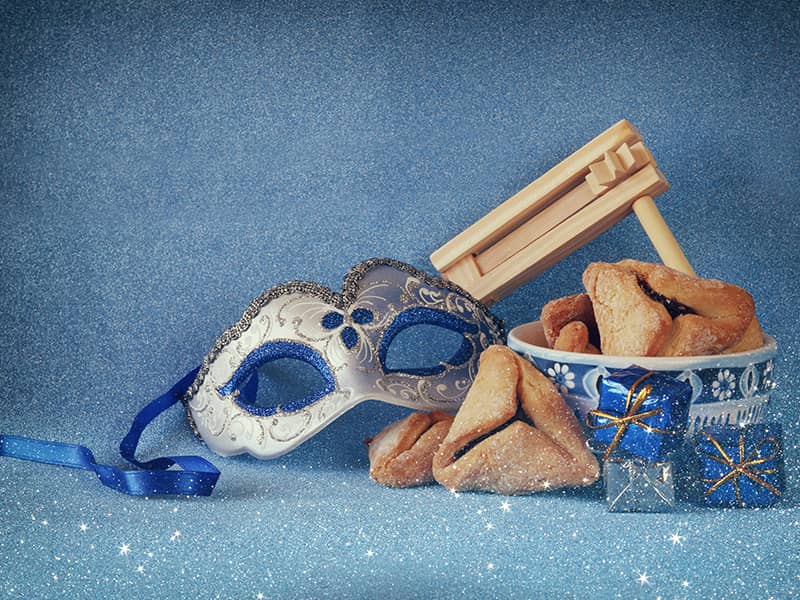After the pageantry of Purim and the feasting and family togetherness of Passover, Shavuot, which commemorates the receiving of the Torah, comes almost as an afterthought. It falls at the tail end of the school year, just as summer in all its unstructured glory is upon us.
In traditional households, of course, Shavuot, is anticipated, even counted on, just as the Omer (time when certain prohibitions are observed, such as not cutting hair or getting married) is counted each day from the second night of Passover until the 49th day, when Shavuot arrives. But most American Jewish households let Shavuot, which means literally "weeks," slide without much notice.
Here are some ideas and activities to make the holiday more prominent.
Put yourself at Sinai. Put yourself at Sinai. Shavuot reminds us of how the Jewish people received the Torah. So, create a play or skit, re-enacting how the Israelites received the Torah, concluding with: "We will do and we will obey" (Exodus 24:7). A midrash--legend-says that God approached numerous nations asking each if they would accept the Torah. They all refused or set conditions. Only the Israelites responded that they would accept this perfect gift: "We will do and we will obey" (Exodus 24:7). The "Shavuot Anthology" edited by Philip Goodman (JPS, 1974) is a rich repository of midrashim and readings on the holiday.
Celebrate the first fruits. In Israel, Shavuot is an agricultural holiday that honors the wheat harvest. The early spring and summer bounty is just about ready to pick in most parts of this country. Visit a pick-your-own farm and enjoy gathering buckets of ripening berries in the warm sun to take home and slather with sweet cream or bake into pies and cobblers.
Learn something Jewish. Revive the tradition of all-night study by organizing a group from your synagogue or havurah to teach and learn. We stay awake all night to correct the error of our ways. According to tradition, the Israelites overslept on the morning that God gave the Torah and had to be awakened by Moses. To compensate for this negligence, Jews hold a study vigil on the eve of Shavuot called Tikkun Leil Shavuot, or the Repair of Shavuot Evening.
My own Washington, D.C., congregation has done this successfully for a few years running. Beginning right after the evening service, ma'ariv, and lasting until dawn, members share their knowledge, from a passage or two of Talmud, to the exploration of why we drink grape juice for kiddush (blessing of the Sabbath that is said over wine), to a talk on contemporary Yiddish women writers. Typically an all-volunteer affair, the presentations can be as short as 10 or 15 minutes. Food for fortification throughout the long night is definitely recommended.
Got milk? The Torah has been likened in sweetness to milk and honey, like the land of Israel itself, so dairy meals are traditional for this holiday, and in many homes blintzes are de rigeur. Crepe-like blintzes filled with berries, fruit or sweet cheese in shape and bounty recall the look of a Torah scroll, so perhaps that's why these delicious treats have become synonymous with the holiday. Other teachings about dairy meals include the fact that before Shavuot the Israelites didn't have the Torah, so there were no laws of kashrut (keeping kosher). Upon receiving the Torah, kashrutz came into force, but the tribes had no kosher meat or kosher dishes available, so they ate dairy only until fresh meat could be prepared.
Take ten--commandments. The centerpiece of the receiving the Torah, of course, is the Decalogue. Review the Ten Commandments, and as a family come up with your own top-ten list, an ethical covenant for your family to follow alongside the original--and ultimate--ten.
Read the book. The Torah, that is. It's the central reason for the holiday in the first place, so take out a translation, sit down and read. Try the JPS's The Torah: The Five Books of Moses, JPS's Torah Commentary, Gunther Plaut's The Torah: A Modern Commentary (UAHC Press), Aryeh Kaplan's The Living Torah (Moznaim), or The Torah for Family Reading: The Five Books of Moses, the Prophets, the Writings by Joseph Gaer (Jason Aronson) and The Illustrated Torah by Michal Meron and Ellen Frankel (JPS). For youngsters, a number of simplified retellings are a good place to start. Pitspopany Press has a colorful illustrated series and a number of anthologies of Bible stories for children. Eric Kimmel's Be Not Far From Me (Simon & Schuster) is a lovely retelling of some of the Torah stories, as is Julius Lester's Genesis, When the Beginning Began (Harcourt Brace).

